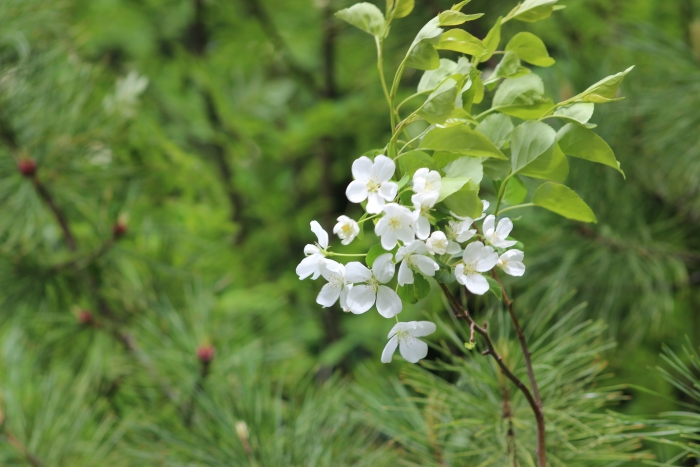Siberian Crab Apple
(Malus baccata)
Siberian Crab Apple (Malus baccata)
/
/

© Tatiana Strus
CC BY 4.0
Image By:
© Tatiana Strus
Recorded By:
Copyright:
CC BY 4.0
Copyright Notice:
Photo by: © Tatiana Strus | License Type: CC BY 4.0 | License URL: http://creativecommons.org/licenses/by/4.0/ | Uploader: tls-60 | Publisher: iNaturalist |





















































Estimated Native Range
Summary
Malus baccata, commonly known as Siberian Crab Apple, is a deciduous tree or large shrub native to the boreal forests and temperate woodlands of Asia, including regions of Siberia, Mongolia, and northern China. It typically grows to a height of 10–14 meters (33–46 ft) with a broad, rounded crown. The branches tend to arch or overhang and are characterized by their red-brown color, complemented by red-brown buds. During the flowering season in spring, the tree produces showy clusters of white, egg-shaped flowers, each about 2–2.5 cm (0.79–0.98 in) long. By late summer to early autumn, the tree bears dense clusters of small, spherical fruits that are red to yellow in color, measuring around 1 cm (0.4 in) in diameter, and can be mistaken for cherries from a distance.
The Siberian Crab Apple is valued for its ornamental flowers and fruit, which add visual interest to the landscape. It is often used in urban plantings, as a border tree, or for wildlife gardens, where its fruits provide food for birds. The tree is also appreciated for its hardiness, withstanding cold temperatures and showing resistance to many pests. In cultivation, it thrives in full sun and adapts to a range of soil types, provided they offer slow to fast drainage. While the fruits are edible and can be consumed fresh or dried, they are not as commonly used in culinary applications as other crab apple varieties. Gardeners should be aware that Malus baccata can become invasive outside its native range, and it is advisable to consult local regulations before planting.CC BY-SA 4.0
The Siberian Crab Apple is valued for its ornamental flowers and fruit, which add visual interest to the landscape. It is often used in urban plantings, as a border tree, or for wildlife gardens, where its fruits provide food for birds. The tree is also appreciated for its hardiness, withstanding cold temperatures and showing resistance to many pests. In cultivation, it thrives in full sun and adapts to a range of soil types, provided they offer slow to fast drainage. While the fruits are edible and can be consumed fresh or dried, they are not as commonly used in culinary applications as other crab apple varieties. Gardeners should be aware that Malus baccata can become invasive outside its native range, and it is advisable to consult local regulations before planting.CC BY-SA 4.0
Plant Description
- Plant Type: Tree
- Height: 30-30 feet
- Width: 15-20 feet
- Growth Rate: Moderate
- Flower Color: White
- Flowering Season: Spring
- Leaf Retention: Deciduous
Growth Requirements
- Sun: Full Sun
- Water: Medium
- Drainage: Fast, Medium, Slow
Common Uses
Bee Garden, Bird Garden, Butterfly Garden, Edible*Disclaimer: Easyscape's listed plant edibility is for informational use. Always verify the safety and proper identification of any plant before consumption., Fragrant, Hummingbird Garden, Showy Flowers, Street Planting
Natural Habitat
Boreal forests and temperate woodlands of Asia
Other Names
Common Names: Siberian Crab , Manchurian Crab Apple , Chinese Crab Apple
Scientific Names: Malus baccata
GBIF Accepted Name: Malus baccata (L.) Moench